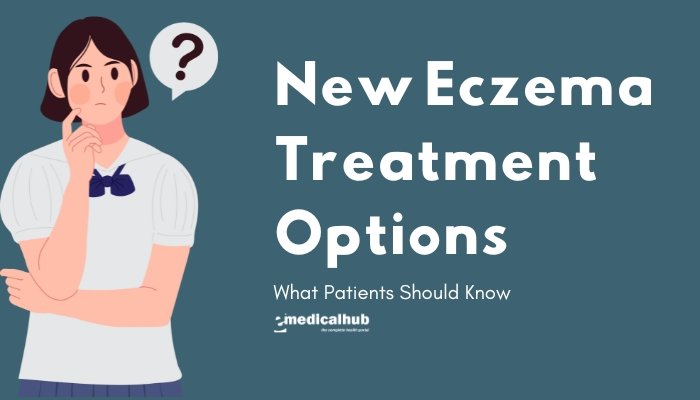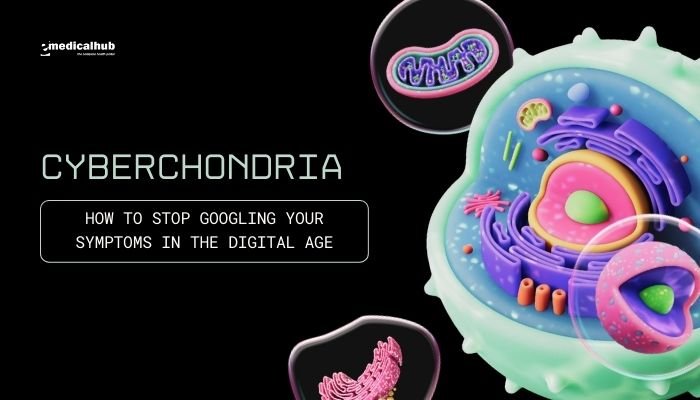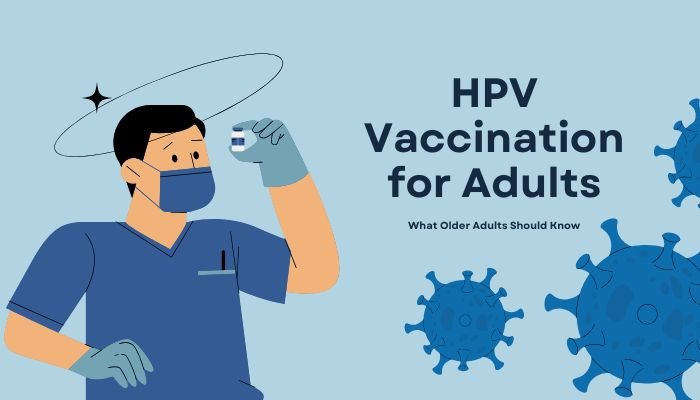Introduction
Eczema, clinically called atopic dermatitis, is a chronic inflammatory skin disorder that affects millions worldwide. Characterized by itching, redness, dry patches, and potential flare-ups, eczema can significantly impact a patient’s quality of life.
Although conventional therapies—like topical steroids and basic moisturizers—remain staples, advances in research have introduced new treatment options targeting eczema’s underlying mechanisms and giving patients more hope for long-term relief.
In this article, we explore both well-known and emerging therapies, focusing on how modern medical innovations help manage eczema’s symptoms and triggers. We’ll address the evolution of topical treatments, novel biologic medications, small-molecule drugs, phototherapy updates, and complementary approaches.
This guide aims to clarify the pros, cons, and safety profiles of these therapies, so that patients can better navigate their options in consultation with healthcare professionals.
Before adopting or changing any therapy, it’s crucial for patients to discuss details with a board-certified dermatologist or allergist, particularly to tailor treatments to their condition’s severity, triggers, and overall health profile.
While each new therapy offers potential benefits, correct usage and monitoring remain key to achieving stable and lasting improvement.
Understanding Eczema: A Brief Overview
Atopic Dermatitis Basics
Eczema is an umbrella term that includes various types of dermatitis. The most prevalent form is atopic dermatitis, which typically begins in childhood but can persist or appear in adulthood. A disrupted skin barrier, combined with an overactive immune response, leads to the hallmark symptoms of dryness, itch, and rash. Environmental factors (allergens, irritants, stress) can provoke flares, though the precise cause involves both genetic predispositions and immune dysregulation.
Impact on Quality of Life
- Physical Discomfort: Constant itching disrupts daily life and sleep.
- Psychological Stress: Visible skin lesions may cause self-consciousness, anxiety, or depression.
- Chronic Nature: Eczema often waxes and wanes over time, requiring ongoing management.
- Economic Burden: Costs of topical medications, doctor visits, and lifestyle changes accumulate, especially for moderate to severe cases.
Given these challenges, improved strategies—beyond standard moisturizers and topical steroids—are in demand.
Conventional Treatments: A Snapshot
For decades, the cornerstone treatments have included:
- Topical Corticosteroids
Reduce inflammation and itching.
Vary in potency; prolonged use of stronger steroids can cause side effects (skin thinning, stretch marks).
Still valuable but require cautious, targeted use. - Topical Calcineurin Inhibitors (TCIs)
Examples: tacrolimus (Protopic) and pimecrolimus (Elidel).
Suppress local immune response without the side effects of steroids, but can cause burning or stinging.
FDA black box warnings about potential cancer risk remain controversial, though usage in moderate amounts is generally considered safe. - Emollients and Moisturizers
Foundation of eczema management.
Maintain skin barrier and reduce dryness.
Formulations: creams, ointments, lotions; best used frequently to lock in hydration. - Antihistamines (Oral)
May help reduce itching intensity, though evidence is mixed.
Can cause drowsiness, so often recommended at night. - Phototherapy (Narrowband UVB)
Exposes skin to controlled ultraviolet light.
Can reduce inflammation for moderate to severe eczema, though frequent clinic visits are required.
While these approaches help many patients, not all achieve sustained remission. Hence the value of newer therapies that target deeper pathophysiological mechanisms.
New Topical Options
Crisaborole Ointment (Eucrisa)
- What It Is: A phosphodiesterase-4 (PDE-4) inhibitor.
- How It Works: PDE-4 inhibition reduces inflammatory mediators in the skin.
- Target Population: Mild to moderate atopic dermatitis in patients age 2 and older.
- Benefits: Steroid-free option, generally well tolerated.
- Common Side Effects: Application site pain (like stinging or burning), but typically mild.
Bottom Line: Crisaborole fills a gap between simple moisturizers and steroid-based creams, offering a safer long-term approach for mild inflammation.
Ruxolitinib Cream (Opzelura)
- What It Is: A topical Janus kinase (JAK) inhibitor.
- Mechanism: Blocks JAK pathways that drive inflammation in atopic dermatitis.
- Approved Use: Short-term, non-continuous treatment for mild to moderate eczema in non-immunocompromised patients age 12 and older.
- Benefits: Effective anti-inflammatory action without topical steroid side effects.
- Potential Risks: Slight risk of serious infections or thrombosis (per oral JAK data), but topical usage may reduce systemic exposure.
Bottom Line: Ruxolitinib cream shows promise for those seeking potent topical therapy without steroid-induced changes. Monitoring is key if used extensively over large areas.
Biologic Therapies (Injectables)
Biologics are engineered molecules—often antibodies—targeting specific immune pathways linked to eczema. They’ve revolutionized treatment for moderate to severe atopic dermatitis that doesn’t respond well to topicals or phototherapy.
Dupilumab (Dupixent)
- Mechanism: Monoclonal antibody blocking IL-4 and IL-13 signaling, crucial in Type 2 inflammation.
- Approval: For moderate to severe eczema in adults and children (as young as 6 months, depending on country-specific guidelines).
- Benefits: Significant reduction in itch, improved skin clearance, decreased steroid use.
- Side Effects: Conjunctivitis is fairly common, injection site reactions, rare risk of eosinophilia.
- Dosing: Subcutaneous injections every two weeks typically, with a loading dose at initiation.
Bottom Line: Dupilumab has become a gold-standard biologic for atopic dermatitis, with a robust safety profile and proven efficacy.
Tralokinumab (Adtralza)
- Mechanism: Binds and neutralizes IL-13 (another key cytokine in atopic dermatitis).
- Approval: For moderate to severe atopic dermatitis in adults.
- Benefits: Similar outcomes to dupilumab, controlling inflammation and pruritus.
- Side Effects: Possible injection site reactions, mild respiratory or eye conditions, similar to other biologics.
- Dosing: Subcutaneous injection, usually every other week following a loading phase.
Bottom Line: Another potent biologic that selectively targets IL-13, offering an alternative for individuals who can’t tolerate or don’t respond fully to dupilumab.
Lebrikizumab
- Status: Another anti–IL-13 monoclonal antibody in late-phase clinical trials (FDA approval may occur soon).
- Potential: Expected to have a similar efficacy and side effect profile to existing IL-13 inhibitors.
Bottom Line: The pipeline for biologics in eczema continues to expand, broadening personalized treatment choices.
Oral Small-Molecule Drugs
JAK Inhibitors
While ruxolitinib cream is a topical JAK inhibitor, systemic versions (like upadacitinib, abrocitinib, baricitinib) are also used in moderate to severe atopic dermatitis:
- How They Work: Block the Janus kinase pathways behind cytokine signaling.
- Efficacy: Rapid itch relief and improved skin clearance in severe cases.
- Safety Considerations: Black box warnings about serious infections, malignancies, thrombosis. Systemic side effects require vigilant monitoring.
Bottom Line: Oral JAK inhibitors show strong effect for patients with stubborn eczema but demand close physician oversight due to potential systemic risks.
PDE4 Inhibitors (Oral)
- Apremilast: Commonly used for psoriasis, has shown some promise off-label or in trials for eczema.
- Potential Advantage: Possibly fewer side effects than systemic immunosuppressants, but real-world efficacy for atopic dermatitis is still under investigation.
Phototherapy Updates
Narrowband UVB
- Mechanism: UVB rays modulate immune responses in the skin, reduce inflammation, and help restore barrier function.
- Traditional Approach: 2–3 sessions per week for about 12 weeks.
- Advantages: Non-pharmacological, beneficial for widespread lesions.
- Limitations: Requires frequent clinic visits, not ideal for very young children, and potential long-term risk of photoaging or small increased skin cancer risk.
Excimer Laser (Targeted Phototherapy)
- How It Works: Delivers concentrated UVB to specific eczematous plaques, sparing healthy skin.
- Ideal Use: Localized stubborn patches resistant to topicals.
- Pros: Less overall UV exposure, fewer sessions than full-body phototherapy.
- Cons: Cost and availability might be limiting factors.
Bottom Line: Phototherapy remains a viable option, especially when topicals alone aren’t sufficient. However, the time commitment is considerable, and availability can be an issue.
Lifestyle and Complementary Approaches
Trigger Avoidance
- Common Irritants: Harsh soaps, fragrances, certain fabrics (wool, synthetics).
- Environmental Allergens: Dust mites, pollen, pet dander—managing exposure helps reduce flares.
- Stress Management: Psychological stress can worsen eczema, making relaxation techniques beneficial.
Dietary Adjustments
- Food Allergies: Rarely, eliminating allergenic foods (like dairy, eggs) if a confirmed sensitivity is present can reduce flare-ups.
- Anti-Inflammatory Diet: Emphasize fruits, vegetables, omega-3–rich fish. Though not a cure, it may support overall skin health.
Moisturizing Techniques
- Soak and Seal: Bath or shower in lukewarm water, then immediately apply a thick moisturizer to lock in water.
- Ingredients: Look for ceramides, colloidal oatmeal, or shea butter.
- Frequency: Several times a day if dryness is severe.
Mind-Body Therapy
- Biofeedback, Meditation, or Therapy sessions can alleviate stress-induced flares.
- Acupuncture: Anecdotal evidence suggests mild improvement in itching, though high-quality studies are limited.
Bottom Line: While not cures, these supportive measures often enhance the efficacy of medical treatments and help stabilize daily skin conditions.
Pediatric and Adolescent Eczema: Special Considerations
Earlier Biologic Use
- Dupilumab has expansions in labeling down to infants in some regions, revolutionizing severe pediatric eczema management.
- Long-term Safety: Trials so far show good tolerance, though ongoing data collection is crucial.
Gentle Skincare Routines
- Minimize Potential Irritants: Fragrance-free, tear-free cleansers.
- Education: Teaching kids the importance of regular moisturizing and avoiding scratching can reduce infection risk.
Parental Involvement
- Consistency: Creating daily routines for topical application.
- Allergy Testing: In persistent or severe cases, thorough evaluation for environmental/food triggers.
Bottom Line: Early, proactive management in children can prevent more severe complications and improve quality of life.
Managing Moderate to Severe Eczema
For patients whose eczema severely disrupts daily activities, new advanced therapies (biologics, oral immunomodulators) may be needed:
- Biologic or JAK Inhibitor: If topicals + phototherapy fail, these can significantly reduce the inflammatory burden.
- Combination Therapy: Sometimes a biologic with gentle topical steroids during flares or short courses of systemic steroids for acute exacerbations.
- Lifestyle Refinement: Even with potent meds, addressing dryness and triggers daily is essential.
Goal: Achieve sustained control with minimal side effects, shifting from crisis management to stable remission.
Potential Side Effects and Monitoring
Biological Agents
- Infection Risk: Because biologics modulate the immune system, slight increases in certain infections are possible.
- Hypersensitivity: Rare allergic reactions to injection.
- Eye Inflammation (with dupilumab).
- Lab Work: Typically required to keep an eye on immune parameters, depending on the drug.
JAK Inhibitors
- Infections: Tuberculosis, shingles, or other serious infections.
- Cardiovascular & Thrombotic Events: Some elevated risk; patients with risk factors should be monitored.
- Blood Tests: Lipid profile, liver enzymes, complete blood count, etc.
Topicals (Calcineurin Inhibitors, PDE4, JAK Cream)
- Local Irritation: Burning, itching during initial uses.
- Allergy: Rare, but possible.
- Systemic Absorption: Typically limited, but large-area application in small children warrants caution.
General Advice: Always discuss the risk/benefit ratio with a physician, especially if you have comorbidities (like asthma, autoimmune disorders).
Practical Tips: Choosing the Right Treatment
- Assess Severity
Mild Eczema: Usually controlled with topical steroids or calcineurin inhibitors + moisturizers.
Moderate to Severe: May need advanced therapies (biologics or JAK inhibitors) if unresponsive to standard care. - Check Coverage
Many of the new agents (e.g., biologics) can be expensive; verifying insurance coverage or assistance programs is essential. - Duration of Treatment
Chronic Eczema often requires an ongoing maintenance plan.
Evaluate how safe each option is for long-term usage. - Lifestyle
Align therapy with daily routine. For instance, phototherapy demands frequent clinic visits, which can be impractical. - Dermatologist Consultation
They can run patch tests, rule out contact dermatitis, or identify complicating factors (bacterial or fungal infections).
Future Directions
Microbiome Research
- Probiotics and Topical Bacterial Balancing: Investigations into how modulating the skin or gut microbiome might reduce flares.
- Topical Therapies: Emerging formulas that incorporate beneficial strains or postbiotics.
Novel Biologics
- Ongoing trials for other cytokine targets (e.g., IL-31, TSLP).
- Possibly improved safety profiles or less frequent injections.
Gene-Based Insights
- Pharmacogenomics: Tailoring therapy based on individual genetic markers that affect drug metabolism or immune response.
Key Takeaway: Eczema research continues to expand, promising more personalized, effective, and side-effect-friendly solutions.
Frequently Asked Questions (FAQs)
- Can changing my diet cure eczema?
While certain food allergies can exacerbate eczema, a complete cure from dietary changes alone is unlikely. A balanced anti-inflammatory diet may help, but any dietary elimination should be guided by testing and professional input. - How soon might I see results with new treatments like dupilumab?
Many patients notice improvements in itch and rash within a few weeks, but full benefits often appear over 3–6 months. - Is it safe to combine phototherapy with biologics?
Some dermatologists use combination approaches in refractory cases, but each case should be individualized. Monitoring for potential side effects or overexposure is crucial. - If my eczema is mild, do I still need to see a specialist?
Mild eczema often responds to over-the-counter methods and GP advice. However, if frequent flares or lack of improvement persists, a dermatologist can refine the plan, especially if new treatments are considered. - Will biologics suppress my entire immune system?
Biologics like dupilumab or tralokinumab specifically target certain pathways rather than blanket immunosuppression, so the risk of widespread immune compromise is lower than older immunosuppressants. Still, ongoing vigilance for infections is recommended.
Conclusion
The therapy landscape for eczema is more diverse now than ever. From advanced topical agents (like PDE4 inhibitors or JAK creams) to powerful biologics (dupilumab, tralokinumab) and oral immunomodulators (JAK inhibitors), patients have numerous options beyond just steroids and moisturizers. While these breakthroughs offer significant relief, each treatment carries specific considerations about efficacy, safety, cost, and lifestyle compatibility.
Patients should collaborate closely with dermatologists or immunologists, drawing on thorough assessments of disease severity, medical history, and personal preferences. Complementary strategies—like consistent moisturization, allergen avoidance, and stress management—remain integral to success, whether the chosen therapy is new or conventional. Armed with the latest insights, those with atopic dermatitis can move toward more personalized, lasting control of their eczema, regaining comfort and confidence in daily life.
References
- Weidinger S, Novak N. Atopic dermatitis. Lancet. 2016;387(10023):1109-22.
- Langan SM, Irvine AD, Weidinger S. Atopic dermatitis. Lancet. 2020;396(10247):345-60.
- Beck LA, Thaçi D, Hamilton JD, et al. Dupilumab treatment in adults with moderate-to-severe atopic dermatitis. N Engl J Med. 2014;371(2):130-9.
- Eichenfield LF, Tom WL, Berger TG, et al. Guidelines of care for the management of atopic dermatitis: section 1. J Am Acad Dermatol. 2014;70(2):338-51.
- Gooderham M, Papp K, Ferris LK. A review of dupilumab in the treatment of atopic dermatitis. J Drugs Dermatol. 2018;17(12):1263-1268.
- Simpson EL, Bieber T, Guttman-Yassky E, et al. Two phase 3 trials of dupilumab versus placebo in atopic dermatitis. N Engl J Med. 2016;375(24):2335-48.
- Silverberg JI, Toth D, Bieber T, et al. Tralokinumab for moderate-to-severe atopic dermatitis: results from two 52-week, randomized, double-blind, placebo-controlled, phase III extension trials. J Am Acad Dermatol. 2021;85(2):515-527.
- Guttman-Yassky E, Pillai S, Bissonnette R. Emerging pathways and therapies in atopic dermatitis. J Allergy Clin Immunol. 2020;145(2):310-326.
- Paller AS, Kabashima K, Spelman L, et al. Efficacy and safety of ruxolitinib cream for the treatment of atopic dermatitis: results from two phase 3, randomized, double-blind studies. J Am Acad Dermatol. 2022;86(4):1026-1036.
- Elmariah SB, Davis CM, Simmons S. JAK inhibitors: expanding the armamentarium for atopic dermatitis. Curr Allergy Asthma Rep. 2021;21(8):15-20.
- Eichenfield LF, Tom WL, Berger TG, et al. Guidelines of care for atopic dermatitis: section 3. Pediatrics. 2014;134(6):e1735-e1769.
- Werfel T, Ballmer-Weber B, Eigenmann PA, et al. Eczematous reactions to food in atopic dermatitis. Allergy. 2007;62(7):723-728.







